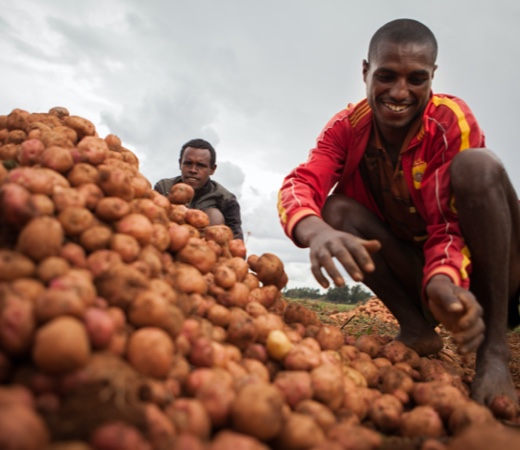Frequently Asked Questions

FAQ
-
Can I get a tax receipt?
Charitable tax receipts are issued for donations over $10 or over.
-
Are donations to the Foodgrains Bank still matched 4:1 by the Canadian government?
Through its ongoing grant agreement with the Government of Canada, donations to the Foodgrains Bank’s used for food assistance projects are eligible for a 4:1 match, up to $25 million a year. Foodgrains Bank also enters into other grant agreements with the Government of Canada that often match donations on a 3:1 basis.
-
How can I donate grain to the Foodgrains Bank?
Canadian Foodgrains Bank can receive donations of any type of grain, pulse crop or oilseeds. Most grain elevators and companies are registered to receive your donation and should have grain delivery tickets from the Foodgrains Bank on hand. Simply call the grain elevator ahead of time or check with your regional representative and we can help ensure everything goes smoothly. Tax receipts are issued to you from the Foodgrains Bank for the value of the grain donated on the day of delivery.
-
How do you know the food actually gets to the people who need it?
Foodgrains Bank members work with trusted partners overseas to make sure food goes where it is intended. Our assistance is carefully and closely monitored, and Foodgrains Bank staff and volunteers regularly visit project sites to conduct audits and do other monitoring.
In spite of some very challenging logistics in foreign ground transportation and distribution, together with civil unrest or war, we know that more than 95% of food gets to where it is needed.
-
What are your administrative costs?
While it fluctuates every year, the Foodgrains Bank keeps its administration costs under 10 percent.
-
Can Canadians visit Foodgrains Bank programs overseas?
The Foodgrains Bank organizes learning tours to allow Canadians the chance to meet people who are participating in Foodgrains Bank programs to improve their lives. We also arrange for people to come to Canada from overseas to tell us about the challenges they face and the positive difference the assistance makes.
-
How can I volunteer?
Glad you asked! We rely on volunteers to raise funds and awareness to help us offer assistance in the developing world. If you are interested in volunteering, contact the regional representatives in your province who work with volunteers, community groups, supporters, churches, and agri-businesses to foster support for the Foodgrains Bank. Your regional representatives will have a good idea of the current volunteer positions and activities that are needed at the Foodgrains Bank. They can help you determine whether volunteering with the Foodgrains Bank is right for you, where you can make the most meaningful contribution, and connect you with a relevant member of staff for your volunteer interests.
-
What are community growing projects?
A community growing project usually involves a group of people (farmers, fuel dealers, equipment dealers, local small businesses, grain elevator staff, church congregations) gathering together to farm a plot of land. When they harvest their crop, they sell it on the Canadian market, and donate the proceeds to the Foodgrains Bank.
There are over 200 growing projects across Canada. These projects contribute approximately half of the donations received by the Foodgrains Bank.
-
What is the Foodgrains Bank doing about hunger in Canada?
Hunger and food insecurity are problems in Canada as well as in developing countries. The mandate of Canadian Foodgrains Bank is to address hunger in developing countries. However, our vision of a world without hunger includes all people, including Canadians. We encourage Canadians to support ending hunger, wherever it exists. Many of our member churches and supporting congregations are actively involved in addressing hunger in Canada through other program. Click here to learn more about food security in Canada.